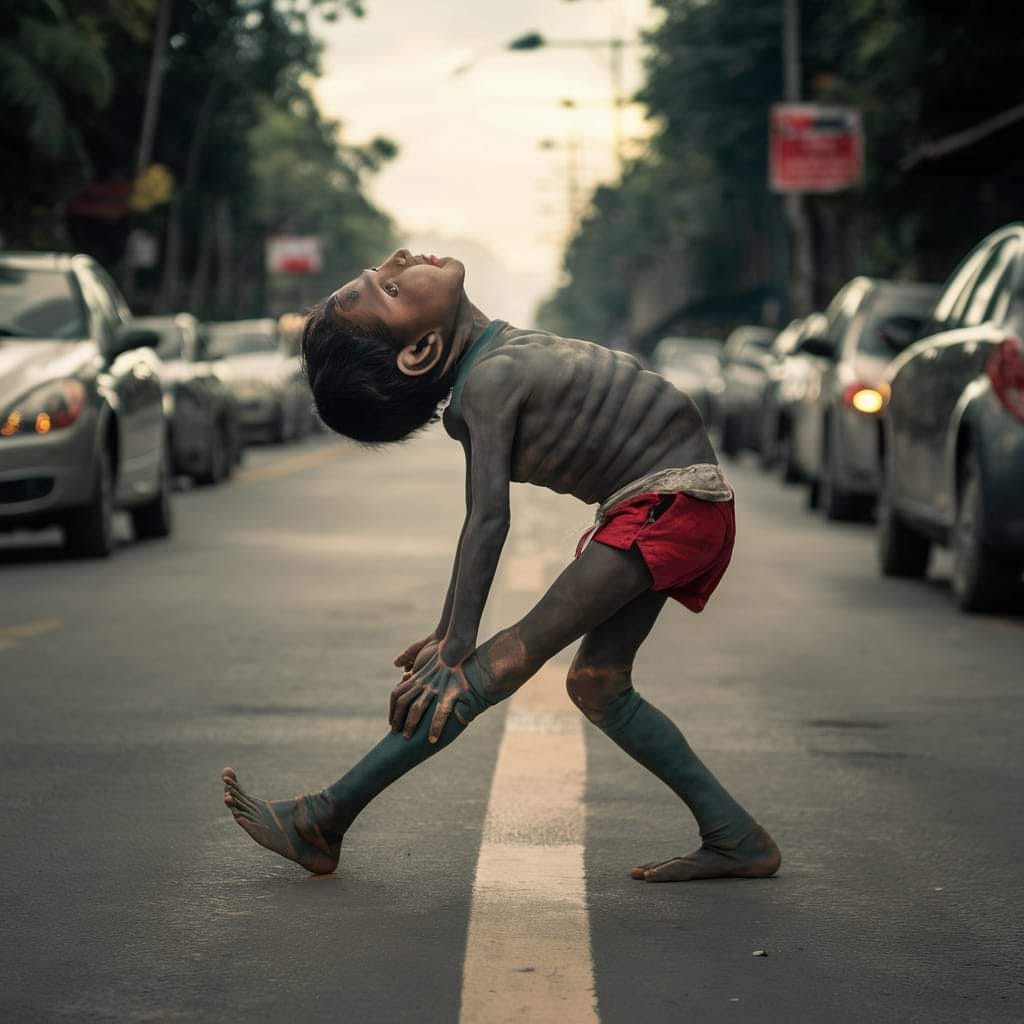In the bustling heart of a city, amidst the relentless flow of traffic and the cacophony of urban life, a hauntingly poignant image captures a moment that transcends the ordinary. This is the story of a young boy, whose existence is etched into the very pavement of the streets he calls home. His frail body, marked by the harsh realities of life on the streets, becomes a symbol of resilience and the unyielding human spirit.
The boy, no older than eight or nine, stands in the middle of a busy street, surrounded by cars that form an indifferent steel corridor on either side. His emaciated frame is painfully thin, ribs visible through his taut skin, a stark testament to the malnutrition and hardships he endures daily. Clad in nothing more than a pair of worn, red shorts, his body is a canvas of dirt and grime, evidence of his constant struggle for survival in an unforgiving environment.
Despite the dire circumstances, there is an inexplicable grace in the boy’s posture. His back is arched in a pose that is almost balletic, one hand reaching down to grasp his foot while the other extends backward. This pose, reminiscent of a dancer caught mid-performance, speaks volumes about the indomitable spirit within him. His face, turned upward, eyes closed as if lost in a moment of introspection or perhaps an attempt to escape the harsh reality, exudes a serene determination.

The backdrop of the city, with its lined-up cars and blurred foliage, adds a layer of complexity to the scene. The vehicles, symbols of progress and mobility, stand in stark contrast to the boy’s static, precarious existence. The street, usually a symbol of movement and connectivity, here becomes a stage where the boy’s silent story unfolds. The irony is palpable: amidst the relentless pace of city life, where people are perpetually on the move, this boy remains rooted, his struggles unseen by the very society that rushes past him.
This image is more than just a snapsH๏τ of poverty and desperation; it is a powerful commentary on the human condition. The boy’s dance-like pose in the midst of chaos symbolizes a delicate balance between survival and despair. It reflects the daily reality for many children around the world who are forced to navigate life on the margins, their lives overshadowed by neglect and indifference.
Yet, amidst the starkness, there is a glimmer of hope. The very act of standing, of holding a pose that suggests defiance and a refusal to be bowed by circumstances, is a testament to the boy’s inner strength. His body, though frail, is resilient. His spirit, though tested, remains unbroken. This image calls on viewers to acknowledge his presence, to see beyond the surface, and to recognize the profound humanity in his struggle.
In telling the story of the boy on the street, we are reminded of our collective responsibility. It urges us to look beyond the comfort of our lives, to see the invisible children who exist on the peripheries of society, and to extend our compᴀssion and support. This boy’s dance is a call to action, a plea for a world where every child can dream, thrive, and live a life free from the shackles of poverty and neglect.




